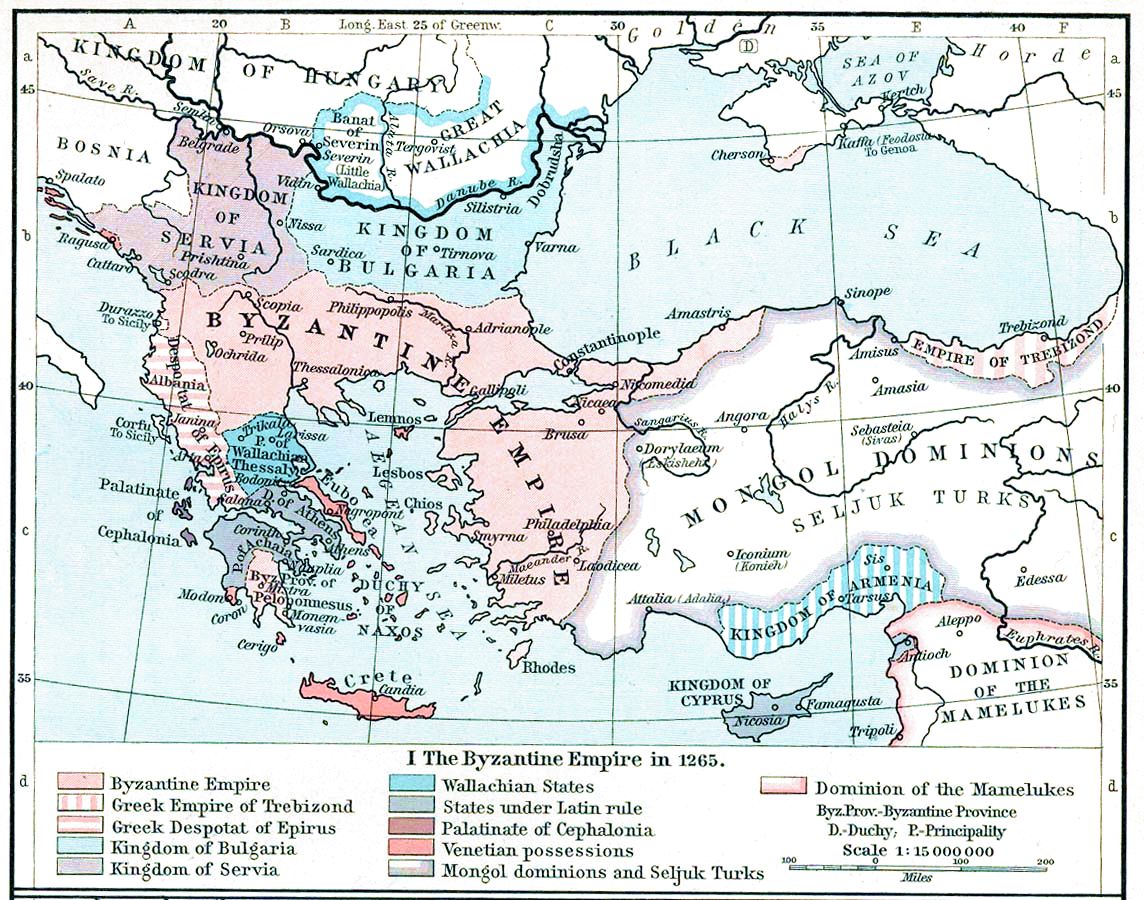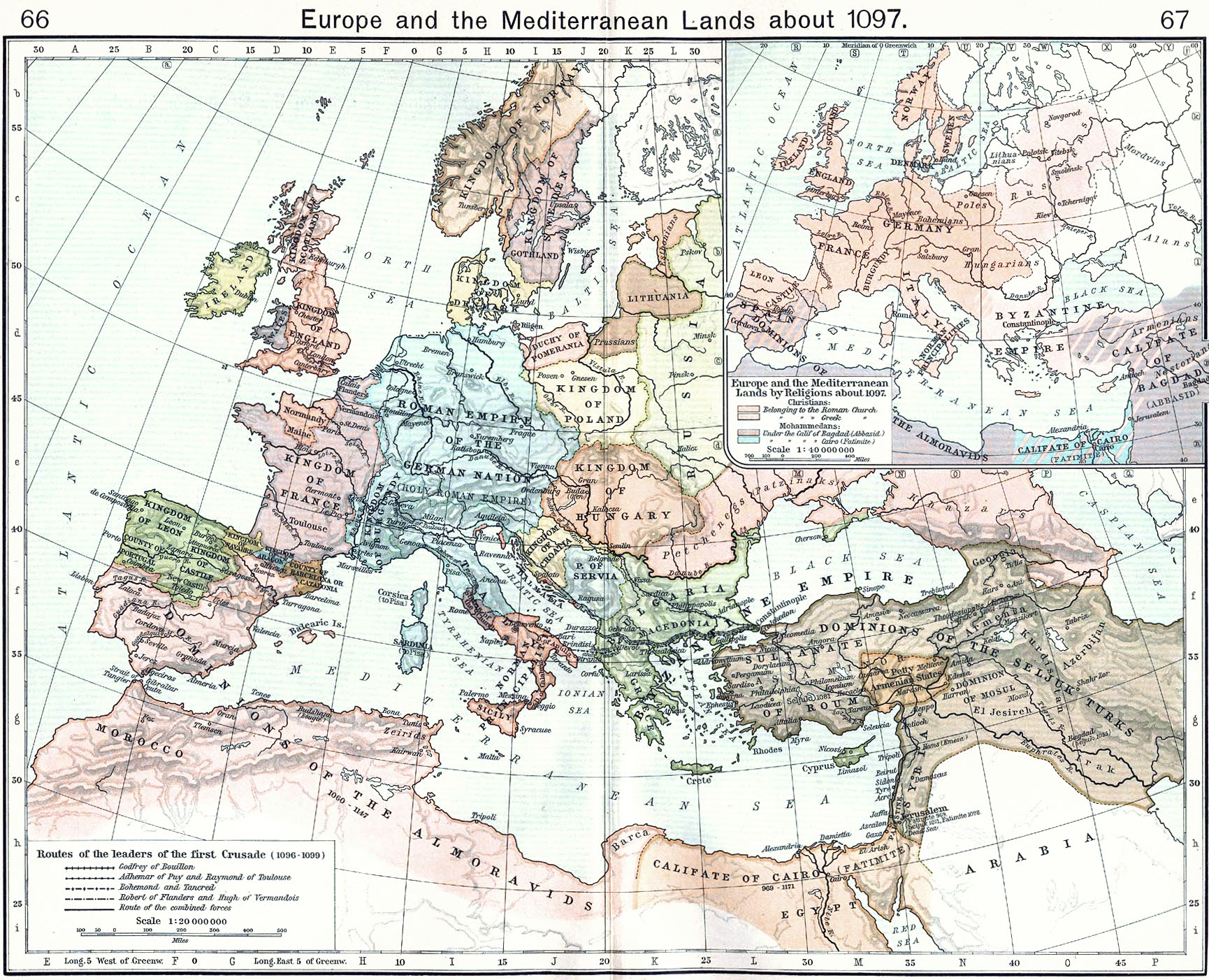|
Siege Of Berat (1280–1281)
The siege of Berat in Albania by the forces of the Angevin Kingdom of Sicily against the Byzantine garrison of the city took place in 1280–1281. Berat was a strategically important fortress, whose possession would allow the Angevins access to the heartlands of the Byzantine Empire. A Byzantine relief force arrived in spring 1281, and managed to ambush and capture the Angevin commander, Hugo de Sully. Thereupon, the Angevin army panicked and fled, suffering heavy losses in killed and wounded as it was attacked by the Byzantines. This defeat ended the threat of a land invasion of the Byzantine Empire, and along with the Sicilian Vespers marked the end of the Western threat to reconquer Byzantium. Background Ever since the Emperor Michael VIII Palaiologos (r. 1259–1282) recovered Constantinople from the Latin Empire in 1261, the restored Byzantine Empire faced the threat of a Latin crusade to reclaim the city. The antagonistic Greek Despotate of Epirus and the Latin state ... [...More Info...] [...Related Items...] OR: [Wikipedia] [Google] [Baidu] |
Despotate Of Epirus
The Despotate of Epirus ( gkm, Δεσποτᾶτον τῆς Ἠπείρου) was one of the Greek successor states of the Byzantine Empire established in the aftermath of the Fourth Crusade in 1204 by a branch of the Angelos dynasty. It claimed to be the legitimate successor of the Byzantine Empire, along with the Empire of Nicaea and the Empire of Trebizond, its rulers briefly proclaiming themselves as Emperors in 1227–1242 (during which it is most often called the Empire of Thessalonica). The term "Despotate of Epirus" is, like "Byzantine Empire" itself, a modern historiographic convention and not a name in use at the time. The Despotate was centred on the region of Epirus, encompassing also Albania and the western portion of Greek Macedonia and also included Thessaly and western Greece as far south as Nafpaktos. Through a policy of aggressive expansion under Theodore Komnenos Doukas the Despotate of Epirus also briefly came to incorporate central Macedonia, with the es ... [...More Info...] [...Related Items...] OR: [Wikipedia] [Google] [Baidu] |
Kingdom Of Albania (medieval)
The Kingdom of Albania (, lat, Regnum Albaniae) was established by Charles I of Naples, Charles of Anjou in the Albanian territories he conquered from the Byzantine Empire in 1271, with the help of the local Albanian nobility. The Kingdom of Albania was declared in late February 1272. The kingdom extended from the region of Durazzo (Dyrrhachium, modern Durrës) south along the coast to Butrint. A major attempt to advance further in direction of Constantinople failed at the Siege of Berat (1280–1281). A Byzantine counteroffensive soon ensued, which drove the Capetian House of Anjou, Angevins out of the interior by 1281. The Sicilian Vespers further weakened the position of Charles, and the Kingdom was soon reduced by the Byzantine Empire, Byzantines to a small area around Durazzo. The Angevins held out here, however, until 1368, when the city was captured by Karl Thopia. In 1392, Karl Thopia's son surrendered the city to the Republic of Venice. History Background During the co ... [...More Info...] [...Related Items...] OR: [Wikipedia] [Google] [Baidu] |
Kaninë Castle
Kaninë Castle ( sq, Kalaja e Kaninës) is a castle in the village Kaninë near Vlorë, in southwestern Albania. History This castle was built in the village with the same name which is about from Vlorë. The castle rises on the side of the Shushica Mountain, about above sea level. The castle was built on the site of an ancient settlement, one of the oldest in the Vlora region. The castle is believed to have been erected in the 3rd century B.C. In the 4th century B.C. the castle was transformed into a fortress town. In the 6th century A.D. the castle was reconstructed by Justinian I. The castle was the center of the Principality of Valona The Principality of Valona and Kanina, also known as the Despotate of Valona and Kanina or simply the Principality of Valona (1346–1417) was a medieval principality in Albania, roughly encompassing the territories of the modern counties of Vlor� ... in the 14th century. The settlement covers an area of 3.6 hectares. Referen ... [...More Info...] [...Related Items...] OR: [Wikipedia] [Google] [Baidu] |
Treaty Of Viterbo
The Treaty of Viterbo (or the Treaties of Viterbo) was a pair of agreements made by Charles I of Sicily with Baldwin II of Constantinople and William II Villehardouin, Prince of Achaea, on 24 and 27 May 1267, which transferred much of the rights to the defunct Latin Empire from Baldwin to Charles. Background The recapture of Constantinople by the Greeks in 1261 had sent Baldwin, the Latin Emperor of Constantinople, always impoverished, to seek aid in Western Europe for a crusade to recapture the throne of the Latin Empire for him. For some time, he had expected aid from Manfred of Sicily, who hoped (like his father, Emperor Frederick II) that a crusade might put him in better standing with the Papacy; but Manfred was ousted from Sicily in 1266 by Charles, acting for Pope Clement IV, severely discomfiting Baldwin. Baldwin was residing at the Papal court in Viterbo in 1267 when Clement arranged to reconcile the Emperor and the newly seated King. As the principal vassal of what remaine ... [...More Info...] [...Related Items...] OR: [Wikipedia] [Google] [Baidu] |
Byzantine–Norman Wars
Wars between the Normans and the Byzantine Empire were fought from 1040 until 1185, when the last Norman invasion of the Byzantine Empire was defeated. At the end of the conflict, neither the Normans nor the Byzantines could boast much power, as by the mid-13th century exhaustive fighting with other powers had weakened both, leading to the Byzantines losing Asia Minor to the Ottoman Empire in the 15th century, and the Normans losing Sicily to the Hohenstaufen. Norman conquest of southern Italy The Normans' initial military involvement in southern Italy was on the side of the Lombards against the Byzantines. Eventually, some Normans, including the powerful de Hauteville brothers, served in the army of George Maniakes during the attempted Byzantine reconquest of Sicily, only to turn against their employers when the emirs proved difficult to conquer. By 1030, Rainulf became count of Aversa, marking the start of permanent Norman settlement in Italy. In 1042, William de Hauteville ... [...More Info...] [...Related Items...] OR: [Wikipedia] [Google] [Baidu] |
Normans
The Normans (Norman language, Norman: ''Normaunds''; french: Normands; la, Nortmanni/Normanni) were a population arising in the medieval Duchy of Normandy from the intermingling between Norsemen, Norse Viking settlers and indigenous West Francia, West Franks and Gallo-Roman culture, Gallo-Romans. The term is also used to denote emigrants from the duchy who conquered other territories such as England and Sicily. The Norse settlements in West Francia followed a series of raids on the French northern coast mainly from Denmark, although some also sailed from Norway and Sweden. These settlements were finally legitimized when Rollo, a Scandinavian Viking leader, agreed to swear fealty to Charles the Simple, King Charles III of West Francia following the Siege of Chartres (911), siege of Chartres in 911. The intermingling in Normandy produced an Ethnic group, ethnic and cultural "Norman" identity in the first half of the 10th century, an identity which continued to evolve over the ce ... [...More Info...] [...Related Items...] OR: [Wikipedia] [Google] [Baidu] |
Via Egnatia
The Via Egnatia was a road constructed by the Romans in the 2nd century BC. It crossed Illyricum, Macedonia, and Thracia, running through territory that is now part of modern Albania Albania ( ; sq, Shqipëri or ), or , also or . officially the Republic of Albania ( sq, Republika e Shqipërisë), is a country in Southeastern Europe. It is located on the Adriatic and Ionian Seas within the Mediterranean Sea and shares ..., North Macedonia, Greece, and European Turkey as a continuation of the Via Appia. Starting at Dyrrachium (now Durrës) on the Adriatic Sea, the road followed a difficult route along the river Genusus (Shkumbin), over the ''Candaviae'' (Jablanica Mountain, Jablanica) mountains and thence to the highlands around Lake Ohrid. It then turned south, following several high mountain passes to reach the northern coastline of the Aegean Sea at Thessalonica. From there it ran through Thrace to the city of Byzantium (later Constantinople, now Istanbul). It co ... [...More Info...] [...Related Items...] OR: [Wikipedia] [Google] [Baidu] |
Buthrotum
Butrint ( el, Βουθρωτόν and Βουθρωτός, ''Bouthrōtón'', la, Buthrōtum) was an ancient Greek and later Roman city and bishopric in Epirus. "Speakers of these various Greek dialects settled different parts of Greece at different times during the Middle Bronze Age, with one group, the 'northwest' Greeks, developing their own dialect and peopling central Epirus. This was the origin of the Molossian or Epirotic tribes." " ..a proper dialect of Greek, like the dialects spoken by Dorians and Molossians." "The western mountains were peopled by the Molossians (the western Greeks of Epirus)." "That the Molossians... spoke Illyrian or another barbaric tongue was nowhere suggested, although Aeschylus and Pindar wrote of Molossian lands. That they in fact spoke greek was implied by Herodotus' inclusion of Molossi among the Greek colonists of Asia Minor, but became demonstrable only when D. Evangelides published two long inscriptions of the Molossian State, set up p. 369 BC ... [...More Info...] [...Related Items...] OR: [Wikipedia] [Google] [Baidu] |
Vlorë
Vlorë ( , ; sq-definite, Vlora) is the third most populous city of the Republic of Albania and seat of Vlorë County and Vlorë Municipality. Located in southwestern Albania, Vlorë sprawls on the Bay of Vlorë and is surrounded by the foothills of the Ceraunian Mountains along the Albanian Adriatic and Ionian Sea Coasts. It experiences a Mediterranean climate, which is affected by the Ceraunian Mountains and the proximity to the Mediterranean Sea. Vlorë was founded as Aulon as an Ancient Greek colony on the Illyrian coast and was conquered at different periods throughout history by Romans, Byzantines, Normans, Venetians and Ottomans. Between the 18th and 19th centuries, the Albanians gathered both spiritual and intellectual strength for national consciousness, which conclusively led to the Albanian Renaissance. Vlorë played an instrumental role in Albanian Independence as an epicenter for the founders of modern Albania, who signed the Declaration of Independence on 2 ... [...More Info...] [...Related Items...] OR: [Wikipedia] [Google] [Baidu] |
Corfu
Corfu (, ) or Kerkyra ( el, Κέρκυρα, Kérkyra, , ; ; la, Corcyra.) is a Greek island in the Ionian Sea, of the Ionian Islands, and, including its small satellite islands, forms the margin of the northwestern frontier of Greece. The island is part of the Corfu regional unit, and is administered by three municipalities with the islands of Othonoi, Ereikoussa, and Mathraki.https://corfutvnews.gr/diaspasi-deite-tin-tropologia/ The principal city of the island (pop. 32,095) is also named Corfu. Corfu is home to the Ionian University. The island is bound up with the history of Greece from the beginnings of Greek mythology, and is marked by numerous battles and conquests. Ancient Korkyra took part in the Battle of Sybota which was a catalyst for the Peloponnesian War, and, according to Thucydides, the largest naval battle between Greek city states until that time. Thucydides also reports that Korkyra was one of the three great naval powers of fifth century BC Greece, alo ... [...More Info...] [...Related Items...] OR: [Wikipedia] [Google] [Baidu] |




